This interview was conducted in February 2023 and has been edited for brevity and clarity.
Central Asia is defined in this article as comprising Kyrgyzstan, Kazakhstan, Uzbekistan, Tajikistan, and Turkmenistan.
Vill du istället läsa artikeln på svenska? Klicka här!
About Johan Engvall
Johan Engvall has been working with the countries in Central Asia (Kyrgyzstan, Kazakhstan, Uzbekistan, Tajikistan, and Turkmenistan) in various capacities for almost 20 years. He is currently an analyst at the Stockholm Centre for Eastern European Studies (SCEEUS) since 2022. Previously, he worked at the Swedish Defence Research Agency (FOI) from 2017 to 2022, the Swedish Institute of International Affairs from 2014 to 2017, and Uppsala University from 2004 to 2014. Engvall has also been a consultant for the World Bank and is a non-resident senior fellow at the Central-Asia Caucasus Institute – Silk Road Studies Program. He is the author of several books, reports, and articles on domestic and foreign policy issues in Eastern Europe and Central Asia. Johan Engvall holds a PhD in Political Science from Uppsala University.
What is the background to your interest in this region?
– It was during my studies that I took a course on the South Caucasus and Central Asia. I immediately felt that the region was different and very exciting. I wrote my master’s thesis on the region, and when I was later accepted as a doctoral student, I focused on Kyrgyzstan. The reason for this was that it was the most open and free of the Central Asian countries where there were established research collaborations and opportunities to conduct field studies. I have visited the region many times through my field trips. I lived there for a while, and then I continued to spend at least a few months there every year.
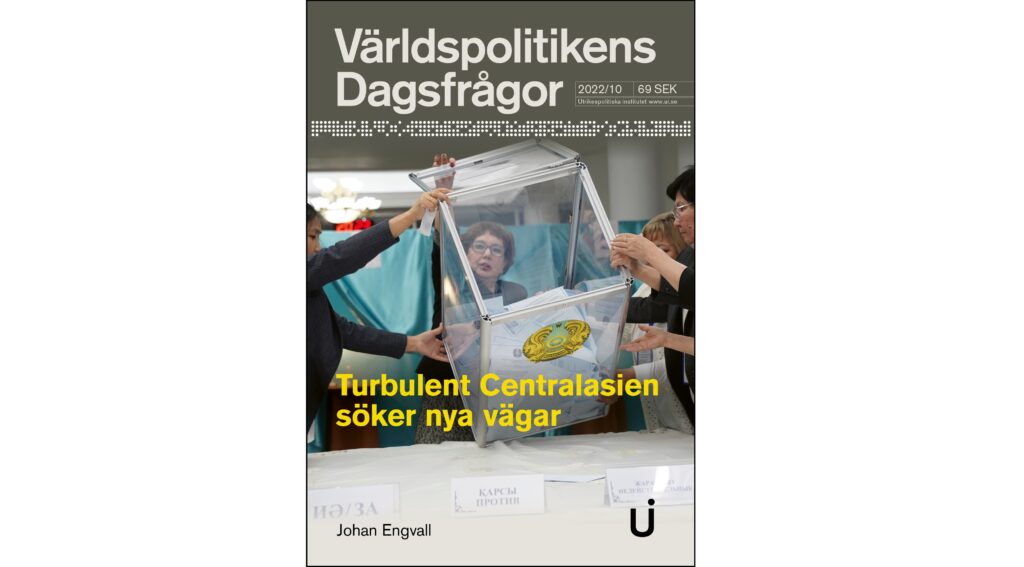
Johan Engvall’s most recent text about Central Asia for the Swedish Institute of International Affairs.
In October 2022, Swedish Institute of International Affairs published a text from you about Central Asia. In the introduction, you write that this region tends to be forgotten and is often a blank spot on the map for people in the West. Why has this happened?
– There are several reasons. One must remember that these countries disappeared completely for 70 years when they were part of the Soviet Union. All interest and research regarding the Soviet Union focused on Moscow and present-day Russia. The five countries in Central Asia were seen as the Soviet Union’s backyard and received no research or attention. In 1991, they suddenly became independent, and five entirely new states emerged that had never existed before. Their borders were drawn by Moscow on the basis of an approximate mapping of the various ethnic groups in the region. Before the Soviet era, these countries had always been part of different fluctuating forms of state formations, such as Arab, Turkish, and Persian empires and governments. From our perspective in Western Europe, the focus after the fall of the Soviet Union has been on countries that are geographically closer to us in Central and Eastern Europe. There was an interest in getting them into the EU, while there were not as clear interest issues regarding the countries in Central Asia from a Western perspective.
In the term Central Asia, you do not include Afghanistan. Why not, and what role does Afghanistan play for Central Asia?
– It can vary, but politically, the post-Soviet states are usually included, and that is why I use that classification. But it should be noted that culturally and historically, Afghanistan was a central part of this area. Then the division came with the Soviet Union, where Afghanistan was not included. One can say that the leaders of the Central Asian countries saw themselves as somewhat better than Afghanistan, which has been largely influenced by conflict and religious extremism, and therefore wanted to keep their distance.
– However, this is changing and the importance of Afghanistan is being recognized. One reason is that it is seen as a corridor for trade with the old Silk Roads. The Central Asian governments have also become more proactive and are trying to develop an active foreign policy. All the countries except Tajikistan are trying to have relations with the Taliban. Now that 30 years have passed since they became independent, they probably feel a little more confident, and the need to isolate themselves has decreased. Now they are truly players in the work of stabilizing Afghanistan.
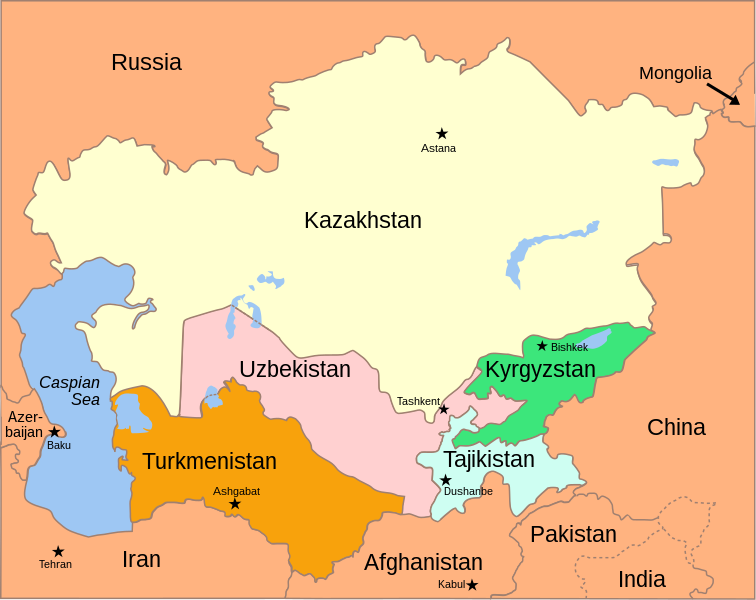
Central Asia includes Kazakhstan, Uzbekistan, Turkmenistan, Kyrgyzstan, and Tajikistan. Some also choose to include Afghanistan. The region is situated between Europe to the west, Russia to the north, the Middle East to the south, and China to the east.
In addition to viewing Central Asia as a blank spot on the map, you also point out that we in the West tend to lump the countries together, referring to them as the “Stan countries” and overlooking the significant differences between the countries and their peoples. Can you highlight both the key differences between them, as well as the similarities that bind them together?
– Historically, there has been a clear division between the settled ethnic groups and the nomadic peoples. The Kyrgyz and Kazakhs were nomads, partly on the vast steppes of Kazakhstan and partly in the Kyrgyz mountains. This way of life continued until the Russian conquest, and the Soviet forced collectivization made them settle down. Before that, they were politically and socially organized in a flat social structure based on clans and kinship ties. The Soviet Union’s hierarchical governance model was foreign to them. The settled ethnic groups historically congregated primarily around the oases in the region, particularly the Uzbeks and Tajiks, for example, in the old splendorous cities of Bukhara and Samarkand. They were authoritatively ruled, probably because a clear order was required to make everything work, such as their sophisticated irrigation systems.
– If we move forward to today, the economy is a central dividing line between the countries. They can be divided into energy exporters and energy importers. Turkmenistan and Kazakhstan control significant oil and gas reserves, while Kyrgyzstan and Tajikistan import energy but have water resources instead. As mentioned earlier, Kyrgyzstan has always stood out politically as a more open and liberal country than the rest. Turkmenistan has been the exception, isolating itself from the other countries. The country is almost not involved in any cooperation and does most things entirely based on its own interests.
“He appointed himself as the father of all Turkmen, put his own picture on the country’s money, renamed the days of the week and months to his own liking, including changing April to Gurbansoltan after his mother.”
– Uzbekistan could be considered the core country of this region. Firstly, it is located geographically in the middle, with borders to all neighboring countries, and secondly, it has the largest population with a significant diaspora in all other countries, including Afghanistan. In 2016, Shavkat Mirziyoyev was elected as the new president of Uzbekistan after Islam Karimov passed away following 25 years in power. The change in regime has drastically transformed the country. From being characterized by protectionism and isolation, Uzbekistan now promotes international cooperation and tries to resolve old conflicts from the Soviet era.
Why is Turkmenistan so clearly distancing itself and isolating itself?
– It is an extremely unique country in many ways. It is located near the Caspian Sea, consists mainly of desert, and has perhaps the world’s sixth-largest gas reserve. Throughout history, the land has been inhabited by different tribes, making it difficult to unite into a modern nation-state. After gaining independence, Saparmyrat Nyýazow became the president of Turkmenistan. During his 15 years in power, he built up a bizarre cult of personality around himself. He appointed himself as the father of all Turkmen, put his own picture on the country’s money, renamed the days of the week and months to his own liking, including changing April to Gurbansoltan after his mother. After his death in 2006, Gurbanguly Berdimuhamedow took over power. He continued on the same path as his predecessor with equally grandiose thoughts about himself. Since March 2022, his son, Serdar Berdimuhamedow, has taken over the presidency. The country is the most totalitarian in the region, and no opposition is allowed. Regarding the outside world, they only want to be left alone.
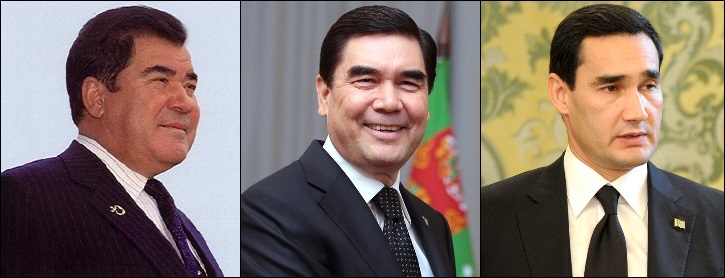
The three leaders of Turkmenistan since the country’s independence from the Soviet Union, from left to right: Saparmurat Niyazov (1990-2006), Gurbanguly Berdimuhamedow (2007-2022), and Serdar Berdimuhamedow (2022 – present).
– When it comes to gas, they have done well. Until just over ten years ago, they had problems because Russian Gazprom had a monopoly on pipelines in the area. This meant that they had to sell Turkmen gas to Russia for a pittance. Gazprom could then re-export the gas to Western Europe at market prices. The situation has now changed since a pipeline system to China was completed in 2009. Almost all gas is now exported eastward, and China buys six to seven times more of Turkmenistan’s gas than Russia. They have replaced their dependence on Russia with dependence on China. Meanwhile, Western Europe is looking at Turkmenistan, and there are talks of building a trans-Caspian pipeline, but for now, it is only on paper. They also have ongoing partnership talks with Turkey and Azerbaijan.
Looking at the World Value Survey, Turkmenistan is not included. The other countries are grouped down to the left (Traditional/Survival). However, Kazakhstan can be found far up the y-axis, towards the secular side, compared to the others. On that front, it is in line with countries such as Portugal and South Africa. Is this something you recognize?
– Yes, it does. Kazakhstan is an enormous country, the ninth largest in the world. At the same time, they have just under 20 million inhabitants. Compared to Uzbekistan, which is significantly smaller in area but has 35 million inhabitants. It is the most developed country in the region, with the strongest economy and highest GDP per capita. We must remember that Kazakhstan was in a special situation when they became independent; 50% of the population were Kazakhs while the rest were mostly Russians. Then the shift occurred as many Russians left the country, and Kazakhs had higher birth rates. But there are still 20% Russians left, mainly living in the northern parts of the country.
– When it comes to religion and the Islamization of this area, Kazakhstan was historically the last of the countries to adopt it. Even today, Kazakhstan is the least religious in the region, clearly. However, religion is playing an increasingly significant role. Islam has really grown in importance in these societies after independence, including in Kazakhstan, although to a somewhat lesser extent. There are also significant differences within the country. In the southern parts, bordering Kyrgyzstan and particularly Uzbekistan, people are much more religious than in the northern parts.
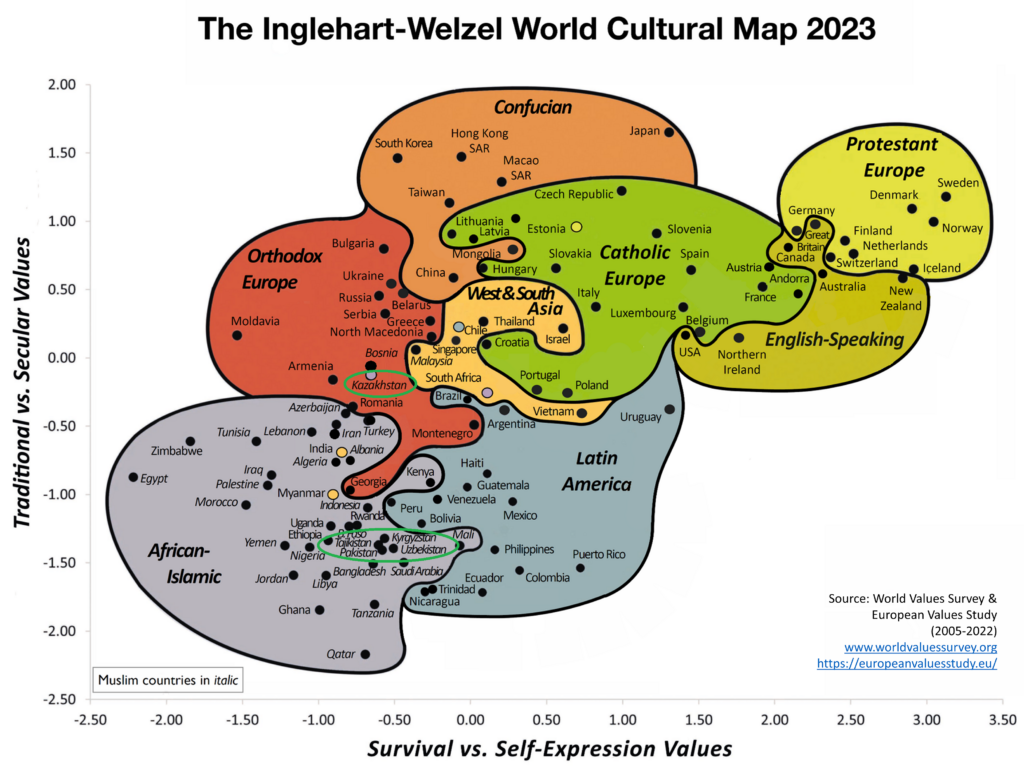
Can you tell me more about how the role of religion has changed in the area throughout history?
– The Arabs invaded the region during the 6th and 7th centuries. They disappeared relatively quickly, but left Islam behind, which has been present ever since. However, the religion has spread unevenly and has gone through phases. The seat of Islam in these five former Soviet republics is the Fergana Valley. It is a valley shared by Tajikistan, Uzbekistan, and Kyrgyzstan, and it constitutes the most fertile and densely populated area in the entire region. Although we may now consider this area to be on the outskirts of the Islamic world, historically it is a central place within Islam with many prominent Islamic scholars who came from there.
– For much of the 20th century, Soviet atheism was imposed on the population and anything related to Islam was suppressed. However, Islam never disappeared and continued to be practiced in parallel and in secret. But this also meant that when the countries became independent, the religious authorities were weak, with very few schooled imams. This resulted in a mix of different influences, such as their own national traditions mixed with Islam. In any case, the Soviet era clearly left a gap that has largely been filled by religion, often with influences from Pakistan, Turkey, and various Arab countries that finance mosque construction. It is both an internal and an external dynamic that interact. Another thing that the Soviet era left behind is the secular system of government, which has been retained with strong support from the population. So even though religion has had a strong resurgence among the population, the state itself is still secular.
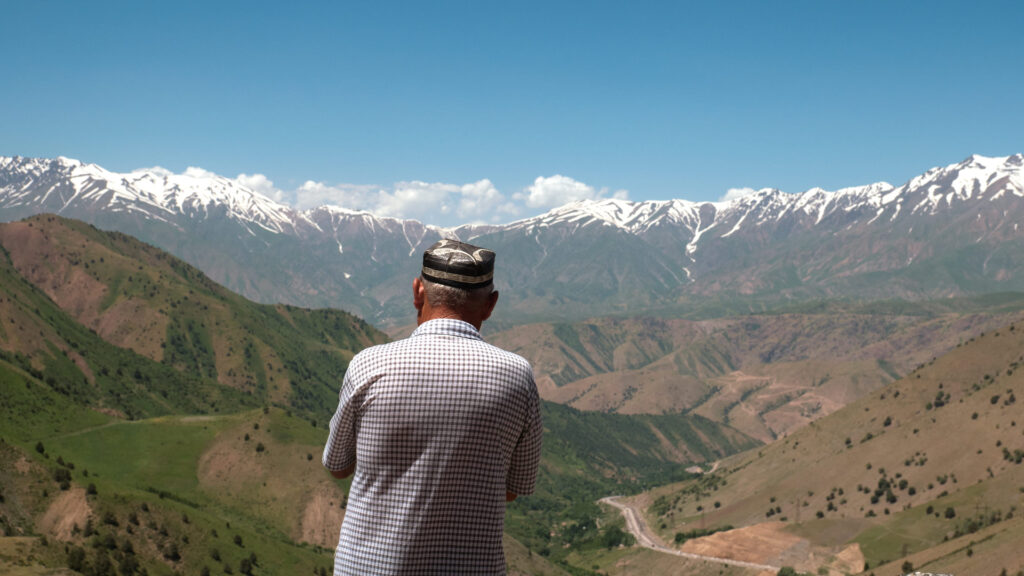
Have any conflicts arisen between the countries since their independence?
– The most serious conflict is the one that erupted last year between the Kyrgyz and Tajiks. It concerns land areas and the problem is rooted in the fact that about 30% of the borders are not demarcated. At first, this was not a big problem, although it was occasionally raised by politicians who emphasized that it was something that needed to be looked at. But they still lived together relatively harmoniously and the borders did not seem to play a particularly large role. However, this has now changed. Over the past decade, the disputes have intensified with fights and stone-throwing between civilians. Since 2021, the countries’ militaries have become involved and it has escalated to the point that 130 people died in the conflict in September 2022.
– Kyrgyzstan and Tajikistan are the two poorest countries in the region, and now distrust between them is growing with each new outbreak of violence, as well as the risk of further escalation. It is interesting to note that both countries are part of the Russian-led military alliance, the Collective Security Treaty Organization (CSTO), but it has not helped so far. Russia offers some involvement, but there is still some mistrust, especially from Kyrgyzstan’s side, which feels that Russia seems to support Tajikistan in this case. The Kyrgyz, who are a Turkic people, have instead received support from Turkey in the form of arms deliveries. The Tajiks primarily turn to their Persian-speaking relatives to purchase drones. Neither the OSCE nor the UN has given this conflict any direct attention yet.
“Their political systems are largely built around corruption, which makes it problematic to combat since the leaders’ own power positions are based on the corrupt system.”
Since the countries became independent, a few leaders have ruled for many years. What is the situation regarding corruption and democracy?
– Unfortunately, the trend is not positive when it comes to democracy, especially since Kyrgyzstan has followed the same path as the other countries. That country stood out as more democratic than the others, but now they too have gone in the authoritarian direction. Leaders in several of the countries talk a lot about modernization and the need for political reforms. They have also made some practical changes, but corruption is still widespread. Their political systems are largely built around corruption, which makes it problematic to combat since the leaders’ own power positions are based on the corrupt system. That being said, there is now a wave of political reforms, and there have been protest movements in several of the countries. Last year, there were demonstrations in Kazakhstan demanding increased political representation.
What is the relationship with Europe like, and how do you think it will change in the future?
– The desire for a relationship with Europe is greater than ever. Especially after the Russian invasion of Ukraine, European representatives are more welcome in this region than they have ever been before. Several diplomats from the highest EU level visited last fall to discuss closer cooperation. Europe is naturally interested in Central Asian gas and oil, but also in increased trade. The EU also wants to support these countries in building up resilience against Russia, which is in line with the region’s desire to diversify and reduce dependence on Russia. The difficulty in political discussions between Central Asia and Europe has always been human rights issues. Communication is easier with Russia and China, who do not care at all about human rights.

The Shanghai Cooperation Organization summit in 2015 with the then-sitting presidents from left to right: Emomaly Rahmon (Tajikistan), Almazbek Atambayev (Kyrgyzstan), Nursultan Nazarbayev (Kazakhstan), Vladimir Putin (Russia), Xi Jinping (China), and Islam Karimov (Uzbekistan).
China’s interest in the Central Asian countries appears to be increasing?
– China’s interests are absolutely extensive, primarily focused on the economy, with Central Asia serving as a hub for the new Silk Roads that China is building. Investments and trade are important interests for China in all countries in the region. At the same time, China is importing more and more of the region’s energy resources, primarily gas from Turkmenistan, but also Kazakh oil. There is also a significant security element in China’s strategy towards the region, particularly regarding Xinjiang, China’s outpost towards Central Asia, where China has been criticized for its treatment of Muslim groups. China wants to ensure the loyalty and obedience of the Central Asian governments with regard to Chinese policy in Xinjiang. To this end, it has the regional organization, the Shanghai Cooperation Organization (SCO), which is meant to combat the three so-called “evils” – regional terrorism, ethnic separatism, and religious extremism – in its member countries. From China’s perspective, Xinjiang is the central issue here, and it wants to ensure that the other countries do not become havens for Uighur separatists.
– For the Central Asian countries, China has contributed to large infrastructure projects, and for the political and economic elites in these countries, various trade flows with China have become increasingly important, partially at the expense of economic exchanges with Russia. At the same time, China is an important alternative security guarantor as concerns grow over Russia’s intentions in Central Asia. Since the Russian full-scale invasion of Ukraine, all governments have managed to get China to express support for their sovereignty and national independence. Among the ordinary people in the region, there is however some fear of China, which serves as a certain counterbalance to unbridled Chinese influence. Unlike Russia, which both the people and the elites feel cultural, linguistic, and historical affinity with, there is no corresponding understanding for China. There is also popular dissatisfaction with the treatment of Muslim people in Xinjiang, primarily the Uighurs, but also ethnic Kazakhs and Kyrgyz living in Xinjiang.
“In the worst case, the conflict between Tajikistan and Kyrgyzstan escalates into an interstate war, or Russia manages to crush Ukraine and then turns, for example, to Kazakhstan to claim the northern parts of the country.”
What does an optimistic and a pessimistic future scenario for the region look like?
– In the best case, political systems are reformed, resulting in stronger ties between state and society that benefit stability and political, economic, and social development. Careful political pluralism is built up while corruption gradually decreases. Security in the region is strengthened from within through cooperation between countries. This makes it more difficult for external forces to manipulate countries while tensions between them are controlled. In the worst case, the conflict between Tajikistan and Kyrgyzstan escalates into an interstate war, or Russia manages to crush Ukraine and then turns, for example, to Kazakhstan to claim the northern parts of the country.
What book would you recommend?
– Then I would like to recommend the Kyrgyz author Chingiz Aitmatov, a national treasure in his home country. Today, he is almost entirely forgotten in the West, but until the 1980s, his works were widely translated into a variety of languages, and he was even mentioned as a possible Nobel Prize candidate. A personal favorite is “The Day Lasts More Than a Hundred Years” – a novel where philosophical questions coexist with science fiction stories. Another is his breakthrough novel “Jamila” – a short, but unusually beautiful, love story. The books are now difficult to come by; it’s libraries or antique bookstores that apply.
If you liked this article, you should probably also check these out:

